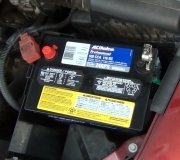Friday, November 20th, 2009 AT 2:30 PM
I seem to have a parasitic battery drain. A fully charged battery is dead in a day or two. I just bought a new battery and want to solve the problem before the new battery dies. I did a battery drain test on it and found nothing. Here's how I did it. I locked the doors and waited 15 minutes, then disconnected the negative battery terminal and attached an unpowered test light between the negative terminal and the battery and the light glowed brightly. While in the car with the doors closed and key out of the ignition, I removed all of the fuses, one at a time and the light continued to glow. Then, while under the hood with the doors closed and no key in the ignition, I pulled all of the fuses and relays under the hood. I disconnected the Aftermarket CD Changer and throughout all of this, the test light glowed. I disconnected the alternator and just about every electrical device under the hood and the light still glows. All of the accessories operate except for the power antennae and the left turn signal bulb is burned out. In the past 8 months I have replaced the: EGR Valve, IAC, TPS, spark plugs, all filters, brake pads, rotors, calipers, tires, etc, etc, etc.I�m stumped and am hoping you might be able to help; please.

